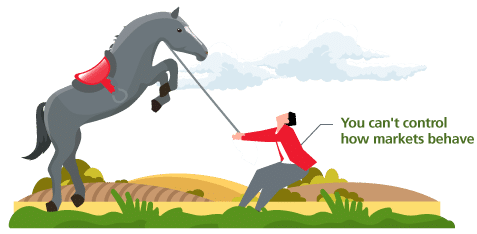Biases that influence how we think can affect the investment decisions we make.

Myth 1
You are in control
Fact
You have little control over how markets can affect your investment outcome
Thinking you are in control can lead you to trade too much and/or try to time the market. It may also cause you to have too little diversification in your portfolio.

Ask yourself why you are buying the investment and what might go wrong. Maintaining a long-term perspective can also keep the illusion of control in check.
Myth 2
Best to avoid change
Fact
Sometimes, avoiding change may not always be best, even if it looks safe
You may feel more comfortable keeping things the same because of inertia, and not as a conscious decision. This is partly due to your instinct to cling onto the familiar, especially when things are uncertain.

A change of perspective can help with inherent biases. E.g. Wondering if you should add more bonds to your portfolio? Ask yourself why you should NOT.

Myth 3
Stick to what you know
Fact
Don’t miss out on the potential of less familiar but attractive options
By preferring to invest only in companies or markets which you are more familiar with (e.g. domestic bias), investors may also fail to diversify their portfolios sufficiently.

Familiar does not mean safe. A financial adviser can help you validate your existing investments and make you aware of other opportunities.

Myth 4
If you’re losing money, wait to make it back
Fact
Sometimes, it is best to cut your losses early and move on to find other attractive options
Research suggests that investors fear losses more than they desire gains. This is why they refuse to sell loss-making investments in the hope of making their money back.

Imagine you need to sell an existing investment before taking on another. This can help you think about what you’re missing out and be more selective.



